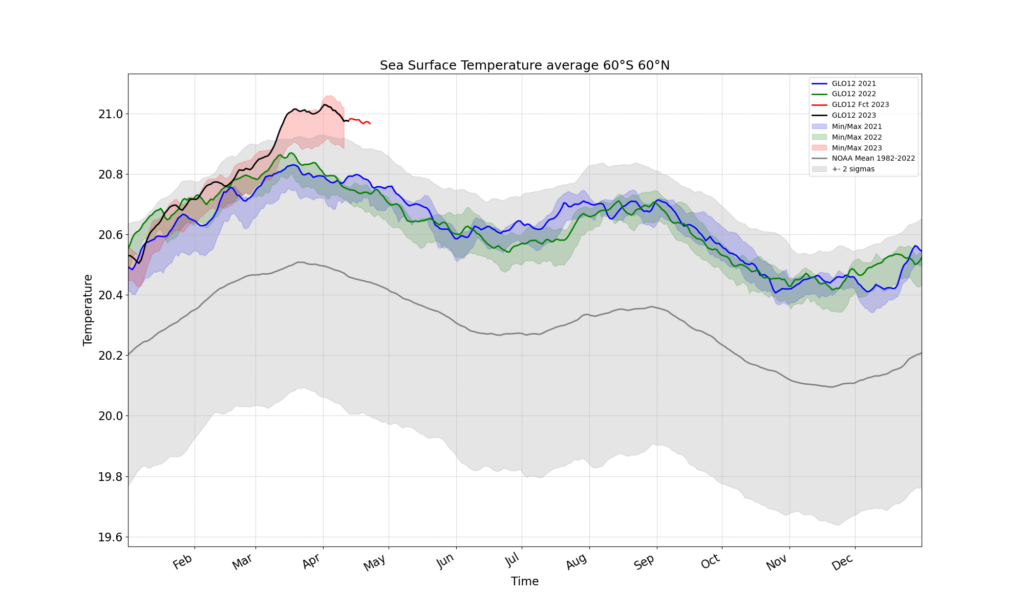La Niña: Current Developments and Implications for Weather Patterns
La Niña, a climate phenomenon characterized by cooler than normal sea surface temperatures in the central and eastern tropical Pacific Ocean, is expected to emerge in the coming months. Recent forecasts from the National Oceanic and Atmospheric Administration (NOAA) and other meteorological organizations indicate a significant likelihood of La Niña conditions developing this fall and persisting through the winter months.
What is La Niña?
La Niña is part of the El Niño-Southern Oscillation (ENSO) cycle, which includes both El Niño and neutral phases. It typically leads to increased hurricane activity in the Atlantic and can influence weather patterns across the globe, including drier conditions in the southern United States and wetter conditions in the Pacific Northwest.
Current Forecasts
NOAA's Climate Prediction Center has reported a 66% chance of La Niña developing between September and November 2024. This forecast includes the latter part of the hurricane season, which could lead to increased storm activity in the Atlantic.
A recent update from the World Meteorological Organization (WMO) predicts a 60% chance of La Niña conditions forming between October 2024 and February 2025. This transition from neutral conditions to La Niña is expected to have significant implications for global weather patterns.
The IRI plume indicates that La Niña may be weak and short-lived, with predictions suggesting it could emerge in the next couple of months and continue through the Northern Hemisphere winter.

Impacts of La Niña
The emergence of La Niña is expected to have various impacts on weather patterns across the United States and beyond:
Increased Hurricane Activity: La Niña typically correlates with a more active Atlantic hurricane season. The cooler ocean temperatures can lead to more favorable conditions for storm development.
Drier Conditions in the South: Regions such as the southern United States may experience drier than normal conditions, which can affect agriculture and water supply.
Wetter Conditions in the Northwest: Conversely, the Pacific Northwest is likely to see increased precipitation, which can lead to flooding and other weather-related challenges.
Temperature Variations: La Niña can also influence temperature patterns, potentially leading to colder winters in some areas and warmer conditions in others.
Recent Articles and Updates
Several articles have been published recently discussing the implications of the upcoming La Niña:
La Niña Expected to Emerge, Here's What It Means | Weather.com (Published on September 12, 2024): This article discusses the NOAA's predictions and what they mean for the upcoming winter.
Weak and short La Niña coming: How it will impact winter | Yahoo (Published on September 12, 2024): This piece highlights the expected impacts of a weaker La Niña on winter weather patterns.
NOAA's Climate Prediction Center says La Niña is favored to emerge this fall | KHOU 11 (Published on September 13, 2024): This article provides insights into the likelihood of La Niña's emergence and its potential effects on weather patterns.
Video Insights
Several videos have also been released that provide visual insights into the developing La Niña conditions:
Tracking a developing La Niña: California's winter weather impacts: This video discusses how La Niña could affect California's winter weather.
WMO predicting 60 per cent chance La Nina will form across Australia: This video explains the WMO's updated forecast for La Niña and its implications for Australia.
Winter weather outlook: La Niña predicted this year | FOX 13 Seattle: This video breaks down what La Niña winters have looked like in the Seattle area and what to expect this year.

As we move into the fall and winter months, the potential emergence of La Niña presents both challenges and opportunities for various regions. Understanding its implications is crucial for preparedness in sectors such as agriculture, disaster management, and public safety. With ongoing updates from NOAA and other meteorological organizations, stakeholders can stay informed about the evolving weather patterns associated with this significant climate phenomenon.
For more detailed information, you can explore the latest articles and videos linked above, which provide comprehensive insights into the expected impacts of La Niña on global weather patterns.





